Features
Minna Rosner essay contest winner Rosemund Ragetli

Each year the Jewish Heritage Centre of Western Canada sponsors an essay contest named for the late Shoah survivor Mina Rosner. Mina Rosner dedicated many hours to educating people about the Shoah as well as the importance of combating racism and discrimination and upholding human rights.
Students in grades 9-12 are annually invited to submit essays on the subject of the Shoah and/or human rights. The winner of the Mina Ronser Human Rights Award receives a monetary prize.
The winner this year is Rosemund Ragetli, who graduated this past June from Westwood Collegiate.
Interestingly, the previous year’s winner, Blake Edwards, was also a student at Westwood Collegiate. Special mention, therefore, must be made of Westwood history teacher, Kelly Hiebert, who not only teaches students about the Shoah, in 2019 he took students to Europe. As part of that trip students visited Auschwitz. Both Blake and Rosemund were part of the group that went on that trip.
Following is Rosemund Ragetli’s essay:
The Silence of History
In the relative comfort of everyday life, it is often difficult to relate our everyday lives with the atrocities of the Holocaust. It is imperative, however, that youth learn and connect with this history, understanding the responsibility each individual has to defend the rights of others. While the ability to seamlessly define the term ‘Holocaust’, or list the names and dates of major battles is an important aspect in forming a contextually accurate historiographic understanding, it is crucial the study of history be expanded; encompassing the significance of each individual life and the constant extrapolation of what may be learned from the past. During grade eleven, I travelled to Europe on a school trip focused on the Holocaust. My experiences in Warsaw, Auschwitz, Lidice, and Berlin forever changed my interpretation of history, bringing to life the magnitude and depth of this atrocity. My abstract and theoretical knowledge, based solely in classroom learning, became connected to the individual stories of those who once stood where I stood, bringing to life the reality of war and sacrifice in a new and extremely powerful manner.
As I walked through the Museum of the Polish Jews in Warsaw, I became transfixed by the complexity of the narrative. Spanning a thousand years, the connection between the Polish empire and the Jewish community was incredible. Throughout the eighteenth, nineteenth, and twentieth centuries, the Jewish population served an integral role within the development of Poland’s economy and social structure1 Jolanta Ambrosewicz-Jacobs and Leszek Hoñdo, eds., Why Should We Teach About the Holocaust?, trans. Michael Jacobs, vol. 2 (Cracow: The Jagiellonian University Institute of European Studies, 2005), ) pg. 17, a reality mirrored in many European nations. However, less than ten percent of these Polish Jews survived the Second World War2 Ibid. pg. 19 . Openly stated in the minutes of the Wannsee Conference, held in Berlin, January 1942, “The aim of all of this was to cleanse German living space of Jews in a legal manner”3 Jon E Lewis , ed., Voices From The Holocaust (London: Robinson, 2012) pg. 125. Within the book, Voices of the Holocaust, Filip Muller, a Sonderkommando from Auschwitz, describes the moment he came to understand this gruesome truth, “The damp stench of dead bodies and a cloud of stifling, biting smoke surged out towards us. Through the fumes I saw the vague outline of huge ovens. We were in the cremation room of the Auschwitz crematorium.”4 Ibid pg. 133
These chilling words rang in my ears as I stood in the Auschwitz barracks, filled with thousands of shoes, the glass case with baby clothing; they echoed on the walls as I stepped inside the crematorium with rows of ovens standing cold and silent. The people who died were no longer a statistic in a textbook, but individual people with lives, families, and dreams, some too young even to speak. As I walked the grounds of Auschwitz, I imagined myself stepping off the train and onto the platform. Our tour guide stopped in front of a blank brick wall, the spot where the camp orchestra played. As a violinist myself, I imagined that this may have been my task; to play for the other prisoners, perhaps my own family as they walked to their deaths. I stood in the silence of the Auschwitz tower, overlooking miles of barracks, alone with these painfully unavoidable thoughts, and I felt the overwhelming reality of suffering and loss.
Prior to our trip, we learned the history of Operation Anthropoid5 Branik Ceslav and Carmelo Lisciotto , “The Massacre at Lidice,” The Massacre at Lidice “The German Occupation of Europe” http://www.HolocaustResearchProject.org (Holocaust Education & Archive Research Team, 2008), ), and the devastating story of the Lidice massacre. In 1942, a group of Czech resistance fighters, working with the exiled Polish government in Britain, successfully assassinated Reinhard Heydrich, a high ranking Nazi official. In retaliation for this act, the German forces destroyed the neighbouring village of Lidice, systematically killing one hundred and seventy-two men, sending the women to Ravensbrück concentration camp, and all but nine children to Chelmno extermination camp6 Meilan Solly, “The Lost Children of the Lidice Massacre,” Smithsonian.com, September 12, 2018, accessed June 23, 2020, https://www.smithsonianmag.com/history/story-lidice-massacre-180970242/). Flattened to ruins, the Nazis proudly proclaimed that “the village of Lidice, its residents, and its very name, were now forever blotted from memory”7 Branik Ceslav and Carmelo Lisciotto , “The Massacre at Lidice,” The Massacre at Lidice “The German Occupation of Europe” http://www.HolocaustResearchProject.org (Holocaust Education & Archive Research Team, 2008), ).
Following the publication of this event, the international community was outraged. A member of the British Parliament founded the “Lidice Shall Live”8 Meilan Solly, “The Lost Children of the Lidice Massacre,” Smithsonian.com, September 12, 2018, accessed June 23, 2020, https://www.smithsonianmag.com/history/story-lidice-massacre-180970242/) campaign, immortalizing the tragedy within the media and on the global stage. This reaction was starkly juxtaposed by the notably restrained response from the Allies regarding the Final Solution. As a politically charged point of contention9 Ibid, the international community was wary to portray the Holocaust as a driving factor in the war, while the Lidice Massacre provided a “neutral and indisputably despicable example” of Nazi cruelty. In truth, nothing could prepare me, or anyone else for our visit to the Lidice memorial. I stepped out of the bus, overlooking a beautiful field, with a stream running through it, and a nearby forest. It was impossible to reconcile these two realities. As we walked through the grass, I could not comprehend how little there was left of the town; the foundation of a church, and a plaque where a house once stood. We stopped in front of the statues of eighty-two children who were murdered10 Ibid, and I struggled to quantify such atrocities. A village, a people and a way of life gone without the smallest trace.
Upon our arrival in Berlin the following day, we embarked on a walking tour of the city, visiting several Holocaust memorials. In particular, the Memorial to the Murdered Jews of Europe was a unique and deeply poignant monument, one which significantly impacted my understanding of the Holocaust. Spanning more than 19,000 square metres, 2711 concrete slabs stand, ranging in height from eight inches to over sixteen feet11 Sam Merrill and Leo Schmidt, eds., A Reader in Uncomfortable Heritage and Dark Tourism, Brandenburg University of Technology, 2010,, accessed June 26, 2020, ) pg. 127. These coffin-like structures silently stretch into a concrete graveyard, commemorating the millions of nameless Jews who died in the Holocaust. As I walked between the rows of concrete pillars, I lost track of time, feeling lost and singularly insignificant. Designed for one person to walk in solitude12 Ibid., pg. 135, I found myself alone between concrete coffins that stretched far above my head. I glanced up at the slits of sky visible and found myself contemplating the enormity of the Holocaust in a way I had not previously. This, I believe, was the purpose of the memorial; the realization that within the confines of such a immense structure, one person is rendered insignificant, just as an individual life may be forgotten among the millions of lives lost. The unchanging constancy of this monument was extremely thought provoking, connecting the colossal magnitude of the Holocaust to a deeply personal and unique experience.
The trip significantly impacted my interpretation of history, in a way I could never have anticipated. By stepping into the events of the past; walking the grounds of Auschwitz and Lidice, standing before the incredible monuments for the Holocaust, I gained a deeper and more personal understanding for the importance of history within my own life. The information I had learned in class was suddenly part of something much larger, the realization that while history is, of course, the study of past events, the true value lies in its application to the present and most importantly, the future. After returning home, I worked to fulfill this mission, studying history with a new appreciation, I joined the Westwood Historical Society in order to connect the atrocities of the Holocaust to the youth of my own generation.
As I toured the Museum of the Polish Jews, walked the grounds of Auschwitz, and stood before the Holocaust memorials in Lidice and Berlin, my interpretation of history changed forever. I understood that it is our mission, as youth, to not only learn history, but to connect and apply it to the future. A theoretical knowledge of the Holocaust must be linked to a personal understanding of its magnitude, with each individual life holding meaning beyond a statistical value. Within the ease of everyday life, this is an undeniably difficult reality to comprehend, but one that must be understood. We as a generation have a responsibility to remember these events, learning from the atrocities of the Holocaust before they fade into the anonymity and silence of history.
Bibliography:
Ambrosewicz-Jacobs, Jolanta, and Leszek Hoñdo, eds. Why Should We Teach About the Holocaust? Translated by Michael Jacobs. 2. Vol. 2. Cracow: The Jagiellonian University Institute of European Studies, 2005. .
Blicq, Andy. “Return to Buchach.” Vimeo. CBC, 2011. .
Ceslav , Branik, and Carmelo Lisciotto . “The Massacre at Lidice.” The Massacre at Lidice “The German Occupation of Europe” http://www.HolocaustResearchProject.org. Holocaust Education & Archive Research Team, 2008. .
Lewis , Jon E, ed. Voices From The Holocaust. London: Robinson, 2012.
Merrill, Sam, and Leo Schmidt, eds. A Reader in Uncomfortable Heritage and Dark Tourism. Brandenburg University of Technology. 2010. Accessed June 26, 2020. .
Rosner, Mina. I Am a Witness . Winnipeg, Manitoba: Hyperion Press, 1990. .
Solly, Meilan. “The Lost Children of the Lidice Massacre.” Smithsonian.com. September 12, 2018. Accessed June 23, 2020. .
Kossak-Szczucka, Zofia. “‘Protest!” of the Underground Front for the Rebirth of Poland 1942.” Source texts Poles and the Holocaust. Accessed June 8, 2020. .
Features
Japanese Straightening/Hair Rebonding at SETS on Corydon
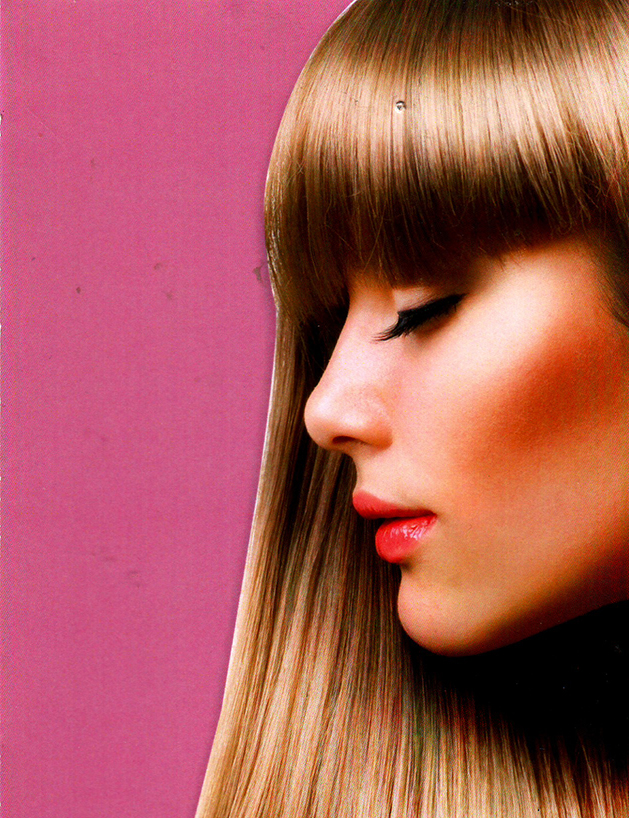
Japanese Straightening is a hair straightening process invented in Japan that has swept America.

Features
History of the Winnipeg Beach Synagogue: 1950-2025

By BERNIE BELLAN The history of the Winnipeg Beach Synagogue is a fascinating one. We have had several articles over the years about the synagogue in The Jewish Post & News.
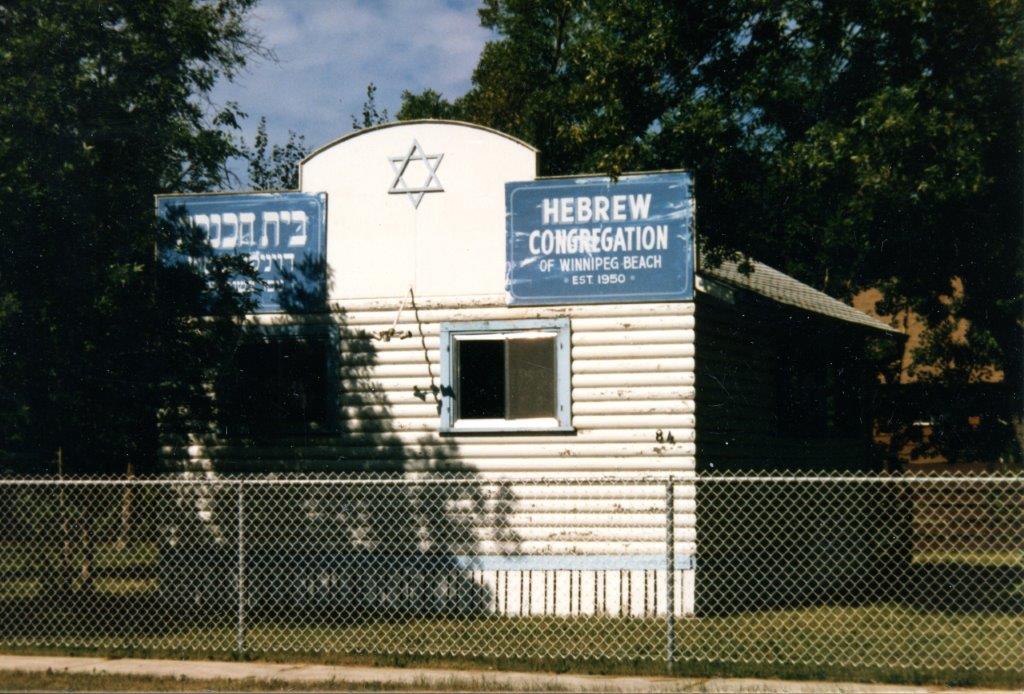
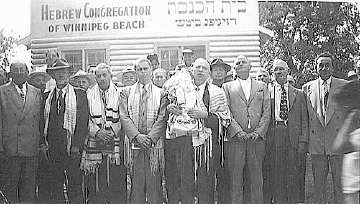
In June 2010 I wrote an article for The Jewish Post & News upon the 60th anniversary of the synagogue’s opening. Here are the opening paragraphs from that article:
“Sixty years ago a group of Winnipeg Beach vacationers decided that what their vacation area lacked was a synagogue. As it happened, a log cabin one-room schoolhouse in the Beausejour area happened to be available.
“In due course, the log cabin was relocated to the corner of Hazel and Grove in Winnipeg Beach, where it stayed for 48 years.”
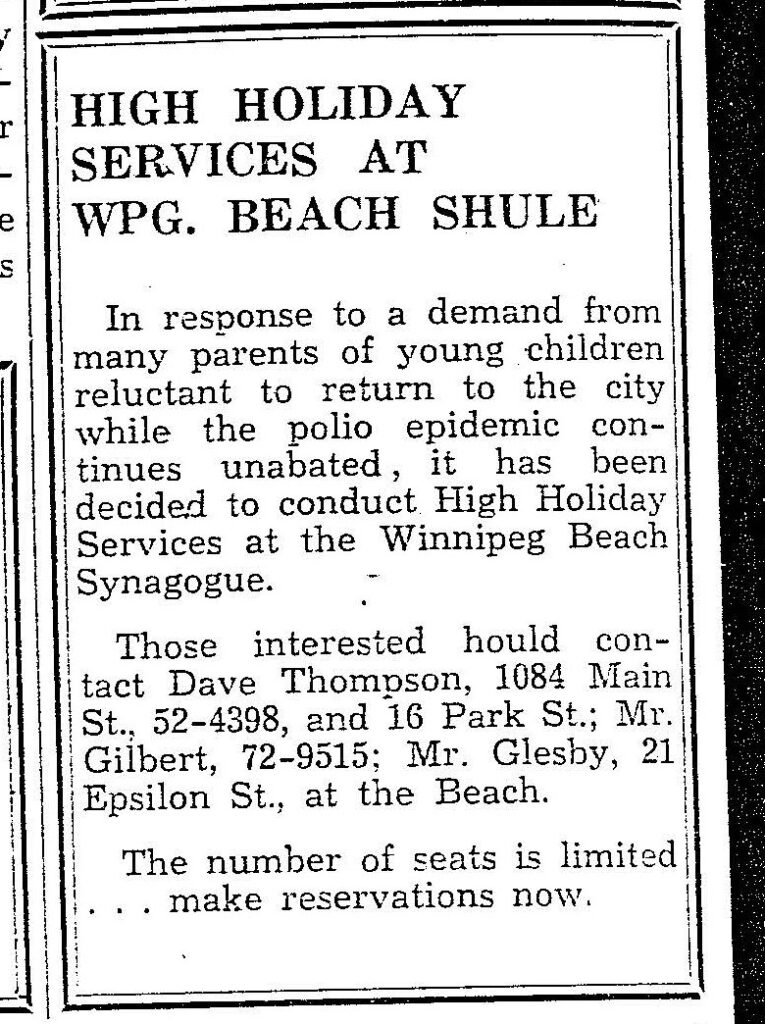
In December 1994 my late brother, Matt, wrote a story about the spraying of antisemitic grafitti on the synagogue which, at that time, was still situated at its original location on the corner of Hazel and Grove in the town of Winnipeg Beach:
“Two 16-year-olds spraypainted slogans like ‘Die Jews,’ ‘I’ll kill you Jews,’ and other grafitti in big letters on the beach synagogue.
“Jim Mosher, a news reporter for the Interlake Spectator in Gimli, said last Halloween’s vandalism against the synagogue wasn’t the first. In the late 1980s, he claimed, it was spraypainted with swastikas.
“Jack Markson, a longtime member of the Winnipeg Beach Synagogue, last week also said he could remember finding anti-Semitic grafitti spraypainted on the synagogue ‘a few years ago,’ and at least twice in the 1970s, when the cottage season was over.”
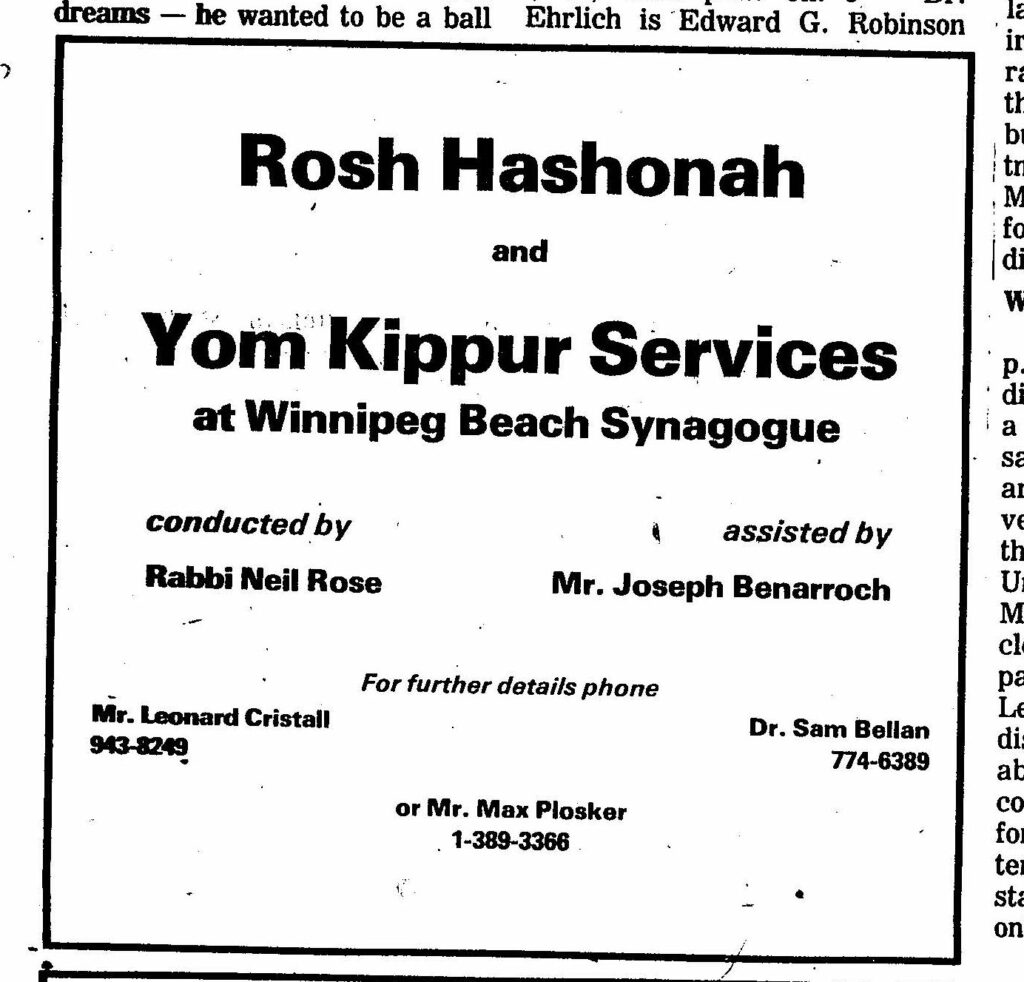
My 2010 article continued: “In 1998 the Town of Winnipeg Beach informed the members of the synagogue that the building would have to be hooked up to the town’s sewer and water system. Rather than incur the cost of $3-4,000, which was thought to be ‘prohibitive,’ according to longtime beach synagogue attendee Laurie Mainster, synagogue goers looked elsewhere for a solution.
“As a result, the board of Camp Massad was approached and asked whether the synagogue might be relocated there, with the understanding that the synagogue would be made available to the camp at any time other than what were then Friday evening and Saturday morning services.
“Over the years the ‘beach synagogue’ had come to be a very popular meeting place for summertime residents of Winnipeg Beach and Gimli. In fact, for years minyans were held twice daily, in addition to regular Saturday morning services. Of course, in those years Winnipeg Beach was also home to a kosher butcher shop.
“While the little synagogue, which measured only 18 x 24 feet, has gone through several transformations, including the move to Camp Massad, and the opening up to egalitarian services in 2007 (The move to egalitarian services was as much a practical necessity as it was a nod to the equality of women – the only Kohen present at the time was a woman!), it has always remained cramped at the best of times.
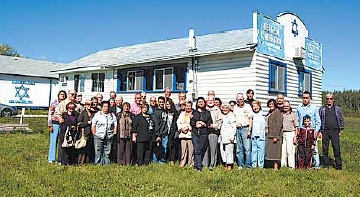
“In recent years the synagogue has seen the addition of a window airconditioner (although to benefit from it, you really have to be sitting just a few feet away), as well as a fridge that allows synagogue attendees to enjoy a regular Saturday morning Kiddush meal following the service.
“According to Laurie Mainster, the Saturday morning service has continued to be popular, even though many of the attendees now drive in from Winnipeg, as they have sold the cottages they once maintained.
“On the other hand, one of the side benefits to being located on Camp Massad’s grounds has been an infusion of young blood from among the camp counsellors.
“Since there is no longer a rabbi available to conduct services (Rabbi Weizman did lead services for years while he had a cottage at the beach), those in attendance now take turns leading the services themselves.
“Anyone may attend services and, while there are no dues collected, donations are welcome. (Donations should be made to the Jewish Foundation of Manitoba, with donors asked to specify that their donations are to be directed to the beach synagogue.)
“Mainster also says that the beach synagogue is now undergoing an expansion, which will be its first in 60 years. An entirely new space measuring 16 x 18 feet is being added – one that will allow for a real Kiddush area. (Until now, a table has been set up in the back of the synagogue and synagogue goers would help themselves to the buffet that is set up each Saturday during the summer. While pleasant enough, it will certainly be more comfortable to have an actual area set aside for the Saturday afternoon after service lunch.)
“As for dress, longtime attendee Abe Borzykowski (in an article written by Sharon Chisvin for the Free Press in 2007) remarked that ‘I don’t think there are many synagogues where people can attend in shorts, T-shirts and sandals and not feel out of place.’ “
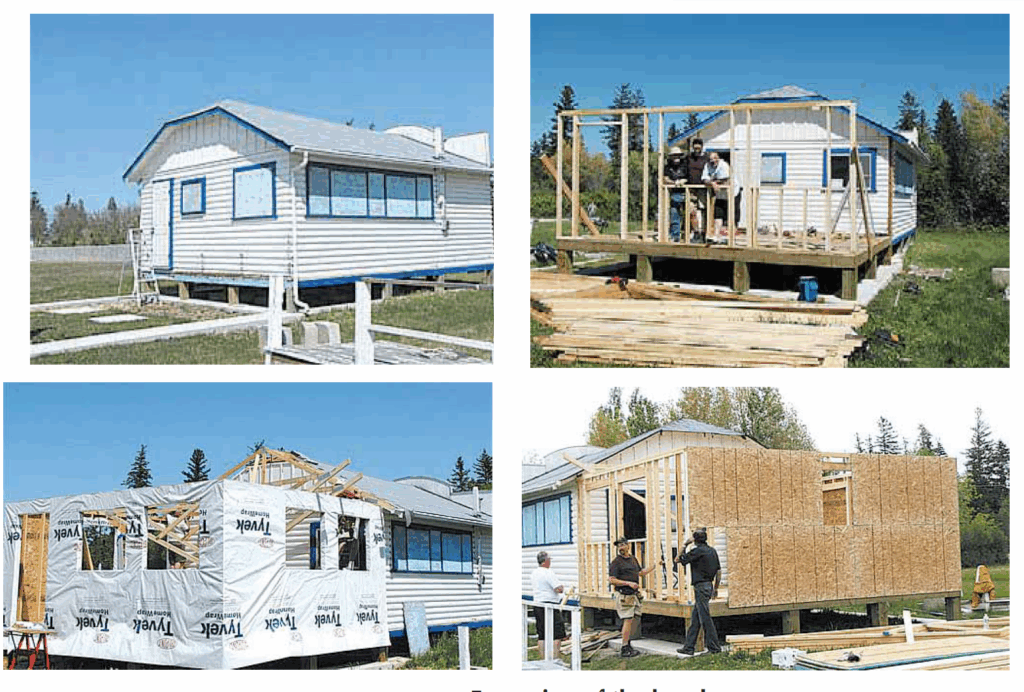
As mentioned in that 2010 article, the beach synagogue at that time was about to undergo an extensive remodelling. Here is an article from a January 2011 issue that describes that remodelling process. The article was written by Bernie Sucharov, who has been a longtime member of the beach synagogue:
“The Hebrew Congregation of Winnipeg Beach made a major change to the synagogue this past summer. With the help of many volunteers, Joel Margolese being the project manager, the synagogue was expanded and an addition was built to handle the overflow crowds, as well as to add more space for the kiddush following services.
“The volunteers spent many Sundays during the summer months building the addition. Bad weather caused many delays, but finally the addition was completed one week before the official summer opening.
“The volunteers were: Joel Margolese, Gordon Steindel, Sheldon Koslovsky, Viktor Lewin, Harvey Zabenskie, Nestor Wowryk, Kevin Wowryk, Victor Spigelman, Jerry Pritchard, and David Bloomfield.
“On Sunday, June 25, 2010 a special ceremony was held to affix a mezzuzah to the front entrance door. Gordon Steindel had the honour of affixing the mezzuzah, which was donated by Sid Bercovich and Clarice Silver.
“Refreshments and food for the day were prepared by Phyllis Spigelman, also known as our catering manager. Throughout the summer, Phyllis, Lenore Kagan and other friends prepared the food for our kiddush.
“A sound system was donated by Arch and Brenda Honigman in memory of their father, Sam Honigman z”l. “The system was installed by Joel Margolese and Stevan Sucharov. This will allow the overflow crowd to hear the service in the new addition.
“There were also generous donations of 50 chumashim and an air conditioner. The chumashim were donated by Gwen, Sheldon and Mark Koslovsky. The air conditioner in the new addition was donated by Joel and Linda Margolese.
“The official opening of the synagogue for the summer took place on July 3, 2010. We had an overflow crowd of 70+ people.”
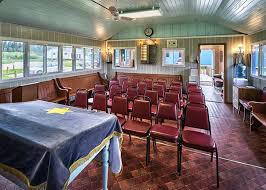
Since that 2010 major addition to the synagogue, it has also added a wheelchair ramp (although I’ve been unable to ascertain exactly when the ramp was built). Also, the synagogue also has its own outdoor privy now. (Attendees used to have to use facilities in Camp Massad.)
And, as already noted in article previously posted to this site (and which you can read at Beach Synagogue about to celebrate 75th anniversary), in recognition of that occasion, on August 2nd members of the synagogue will be holding a 75th anniversary celebration.
As part of the celebration anyone who is a descendant or relative of any of the original members of the first executive committee is invited to attend the synagogue that morning.
If you are a relative please contact Abe Borzykowski at wpgbeachshule@shaw.ca or aborzykowski@shaw.ca to let Abe know you might be attending.
Features
Kinzey Posen: CBC Winnipeg’s former “go-to guy”
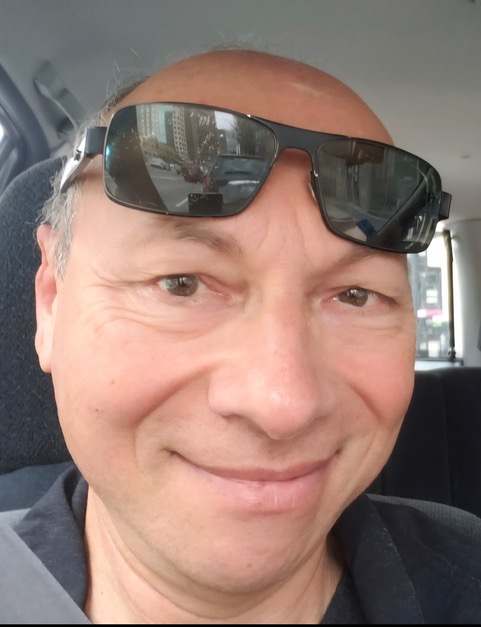
By GERRY POSNER If former Winnipegger Lawrence Wall was the CBC go-to guy in Ottawa, CBC Winnipeg had its own version of a go-to guy for many years with none other than the very well known Kinzey Posen. Of course, many readers will recognize that name from his career with Finjan, the Klezmer group so famous across Canada and beyond. It has been written about Posen and his wife Shayla Fink that they have been involved in music since they got out of diapers. And, as an aside, their love and ability in music has now been transmitted to the next generation as in their son, Ariel Posen (but that’s another story).
Kinzey Posen (not to be confused with Posner, or maybe we are to be confused, but who knows for sure?), was a graduate of Peretz School, having attended there from nursery right until Grade 7, graduating in1966. That was followed by Edmund Partridge and West Kildonan Collegiate. Musically, he was in large part self taught. However, he did have some teachers along the way. After moving to Vancouver – from 1974-78, he had the chance to study acoustic classical bass with a member of the Vancouver Symphony Orchestra. When Kinzey lived in Vancouver, he also worked as a jazz musician.
Upon returning to Winnipeg, Kinzey enrolled as a mature student at the University of Winnipeg, where he obtained a Bachelor of Urban Studies degree. Although the degree was in no way connected to the career that followed, his attending the University of Winnipeg was critical to his connecting with the CBC. Why? you ask. Kinzey had a position after graduation working for the Institute of Urban Studies. While there, he met someone who invited him to work for the Department of Continuing Education as one of their program directors. At the time the Department of Continuing Education was located at 491 Portage Avenue, which was also known as the TJ Rice Building. The CBC also leased some space in the same building. According to Kinzey, the CBC part of the building “included HR, different shows and other support offices. Continuing Education was located in the basement and main floor and that’s where I worked.”
KInzey had long had an interest in the CBC, which made the fact that the CBC had some offices in the same building where he was working serendipitous. That Kinzey might be interested in visiting the CBC was not an accident. As a young boy he had a nightly connection to CBC, as it was his ritual to listen to CBC Radio (as well as all sorts of other radio stations across the USA) on his transistor radio every night in bed. He became enamoured of one particular CBC host, Bill Guest, so that when going to sleep, he imagined that he was Guest doing interviews with imaginary guests. That dream of working for CBC became a reality when he had a chance to do a one week gig with Jack Farr’s network program.
Kinzey took a week off from his Continuing Education job and spent five days at the CBC. That week was a training session for Posen, as he had to create ideas, research, pre-interview, write the script, and set up the studio for Farr’s interview. He was almost in his dream job – although not quite – since it was only for one week. His opportunity, however, came in 1988, when he was offered a one-year term as a production assistant – the lowest guy on the ladder, for a show called “ Simply Folk,” with the late Mitch Podolak as the host. Although he was indeed at the bottom as far as those working on the show were concerned, he took a chance and gave his notice to the U of W. The rest is history. In his new job, Kinzey learned how to become a producer. Lucky for him, at the end of the year, when the person he replaced was supposed to come back, she never returned (just like the song, “MTA,” by the Kingston Trio). At that point, Kinzey was hired full time at the CBC.
Kinzey was a fixture at the CBC for 27 years. During those years, Kinzey had the chance to work with Ross Porter, a respected former CBC host and producer, also with Karen Sanders – on the “Afternoon Edition.” One aspect of Kinzey’s job on the Afternoon Edition was to come up with ideas, mix sound effects, arrange interviews and music, to create a two-hour radio experience. In addition, he covered jazz and folk festivals and, as a result, was exposed to some of the best musicians in the world. With Ross Porter in the 1990s, he worked on a network jazz show called “ After Hours,” which was on from 8-10 PM five nights a week. Kinzey was involved with writing the scripts, picking the music, and recording the shows, as well as editing them and then presenting them to the network for playback.
Of course, over his career, Kinzey had many memorable moments. He told me about one of them. The story revolved around the National Jazz Awards one year in particular. The awards were to be broadcasted after the National News which, in those days, began much earlier in the evening, and were over by 8:00 pm. The legendary Oscar Peterson was lined up to play a half hour set at the awards, starting at 7:30. But, as Kinzey told me, Oscar Peterson had a “hate on” for the CBC ecause one of his recorded performances was wrongly edited and he refused to appear on CBC under any circumstances. As the time neared 8:05 PM, which was when the CBC was to begin its broadcast of the jazz awards, it became apparent that Oscar was not going to finish on time. As the producer of the awards show, Kinzey was tasked with telling Oscar Peterson to wrap it up and get off the stage. There was Kinzey Posen, a huge fan of Oscar Peterson, now faced with the prospect of telling Oscar – while he was still playing – with 500 people in the audience, to stop and get off the stage. Not often was or is Kinzey Posen frozen, but that was one such moment. There was one loud “Baruch Hashem” from Kinzey when Oscar completed his set literally just in time.
Clearly, Kinzey was part of a very successful run with After Hours as it was on the air for 14 years. It was easily one of the most popular shows on CBC Radio 2, and a winner of several broadcasting awards. Kinzey also played a major role in producing a two part documentary about legendary guitarist Lenny Breau.
When After Hours ended, Posen became one of the contributing producers to Canada Live and specialized in producing live radio specials for the network, such as the Junos, for CBC Radio One and Two. Needless to say, his career planted Posen in the world of some top notch musicians, including his time spent working with Robert Plant (Led Zeppelin), Dave Brubeck, Randy Bachman, Chantal Kreviazuk and a list of prominent names in the Canadian, American and European music spheres. Locally, the CBC came to refer to Kinzey as the Jewish expert. I would add music expert to that title.
After his 27 year run at the CBC – and before he fully retired, Kinzey went on to work for the Rady JCC as a program director for a year and a half. Of course, to say that Kinzey Posen is retired is a major contradiction in terms. You really can’t keep him down and he has his hand in a variety of programs and projects – most of which he remains silent about, as is his style.
When I realized the full depth and talent of Kinzey Posen, I quickly concluded that he must certainly be related to me. Even if he isn’t, I now tell people he is.
